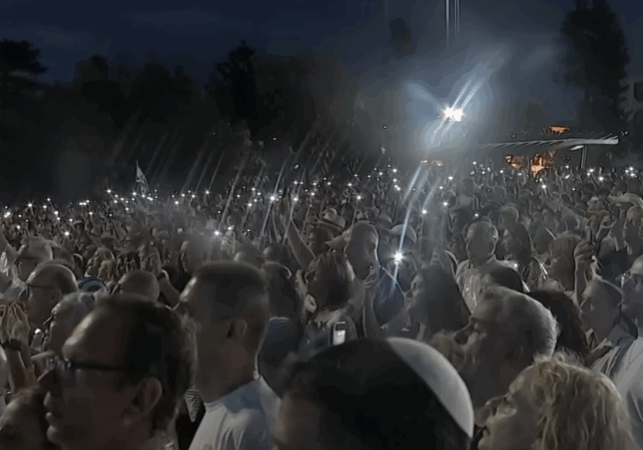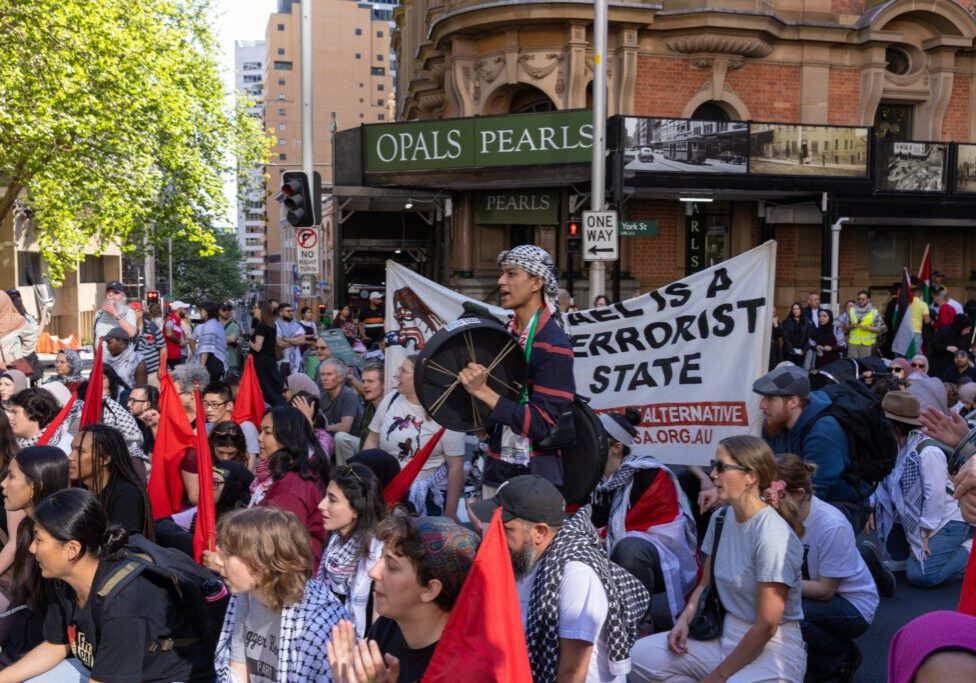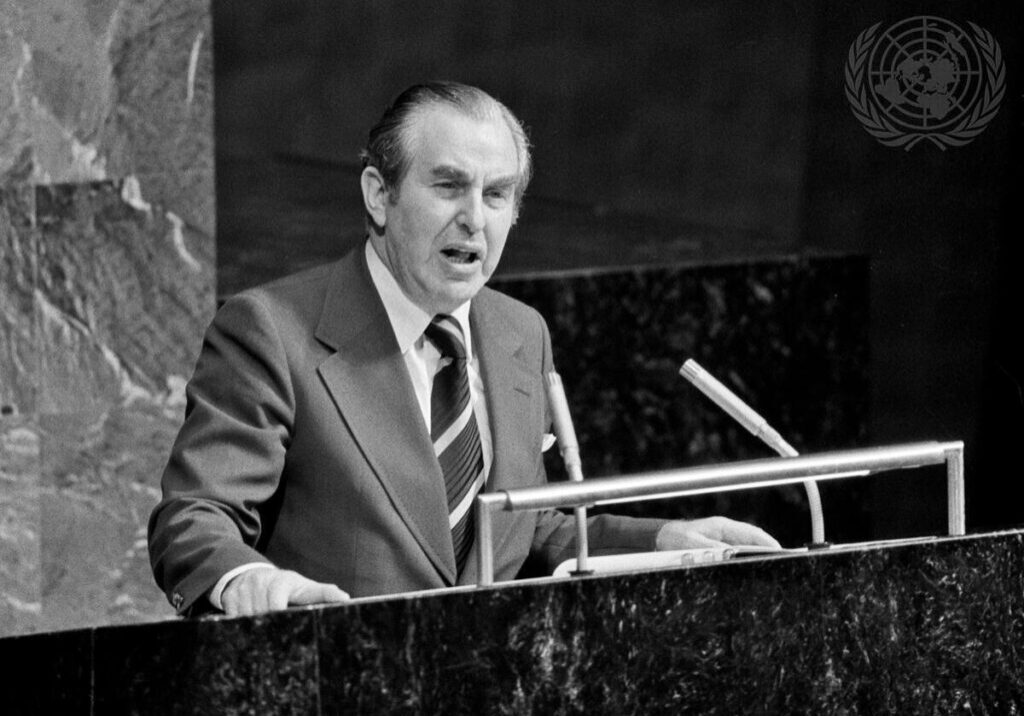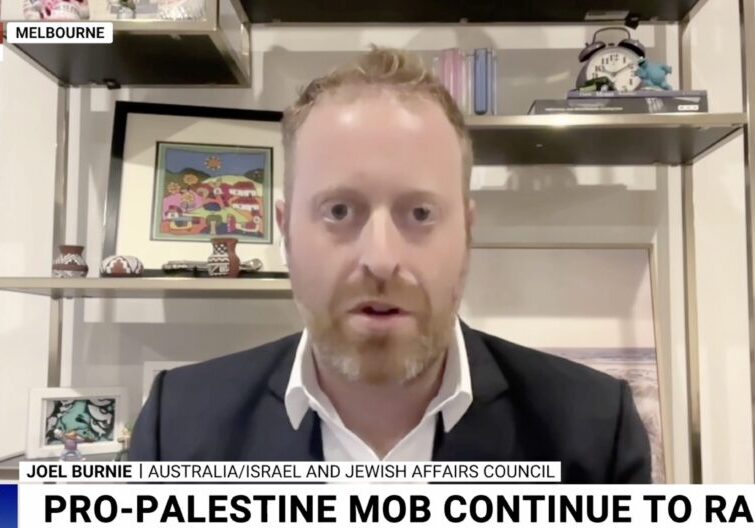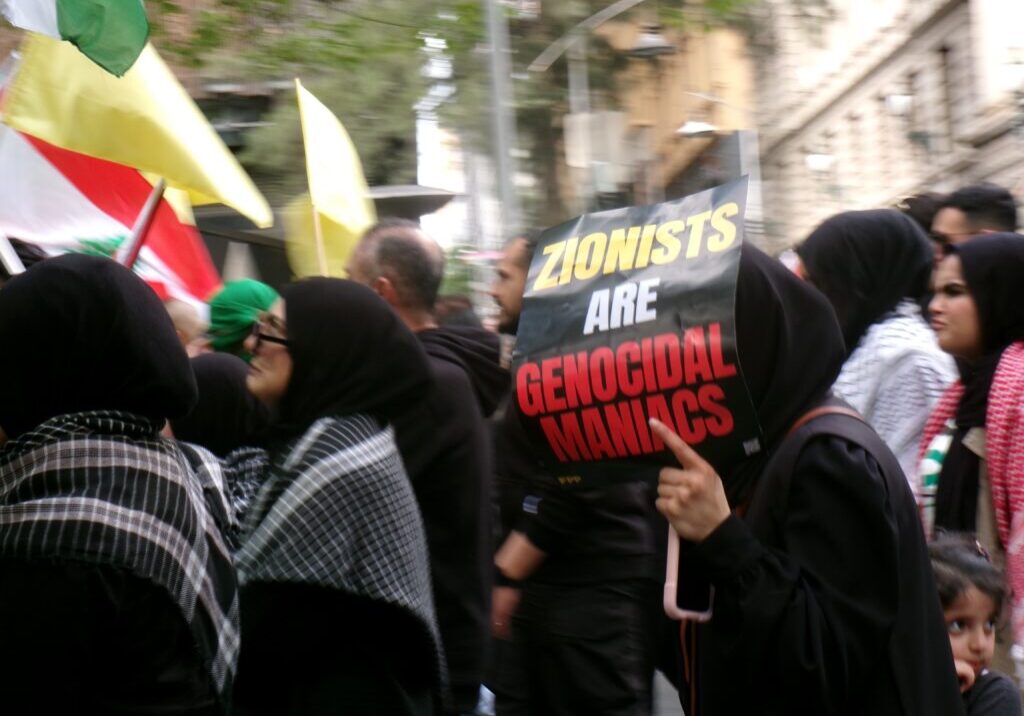Australia/Israel Review
What’s Old is New Again
May 31, 2011 | Daniel Meyerowitz-Katz

Daniel Meyerowitz-Katz
Marrickville City Council’s decision, on December 14, 2010, to pass a motion implementing a Council boycott of Israel has been met with much derision in recent months. It is believed to have been a key factor in the failure of Marrickville Mayor Fiona Byrne to win the state seat of Marrickville for the Greens in the recent NSW elections, despite polls indicating an easy victory. This came a week after the Greens’ NSW branch passed a similar policy, thought to be at the instigation of Senator-elect Lee Rhiannon.
Politicians across the board condemned the boycott, with Foreign Minister Kevin Rudd calling it “the stuff of foreign policy being made by pre-schoolers” and saying that it “reflects no analysis of the complexity of the Middle East peace process”, and Opposition Leader Tony Abbott calling it “nonsense”. Business Council of Australia President Graham Bradley called it “an absolute joke”. After much media attention, the Marrickville decision, though not the NSW Greens one, was repealed on April 19.
That said, some historical context is essential in order to gain an appreciation for the nature of the idea and movement that prompts individuals like Rhiannon and Byrne to propose such controversial measures. The reality is that throughout the history of Israel, there have been various movements to boycott it in different guises, all of which have at some point crumbled and then re-invented themselves.
A Long History
The idea of boycotting Israel is far from new. Since 1922, when the Fifth Arab Congress proposed a boycott on Jewish businesses in British Mandate Palestine, someone has been boycotting Israel in one guise or another. The 1922 boycott began a trend of similar calls over the next two decades, to the point where, according to a motion endorsed by the Pan-Arab Conference in 1937, boycotting Jews in Palestine was considered to be “a patriotic duty”.
An organised boycott of “Zionist entities” began as one of the first agenda items for the recently founded League of Arab Nations in 1945 – three years before Israel was established. The Arab League required any imports into Arab ports to have a “negative certificate of origin” – a document indicating that products were not manufactured in Israel, and their components were also not sourced from the Jewish state. In 1950, this was extended to non-Israeli nationals or companies thought to “significantly contribute to Israel’s economic and military strength”. This was to be implemented via a Central Boycott Office (CBO), established in 1951. The CBO was tasked with creating a “blacklist” of companies and institutions with trade ties to Israel, although the list was designated as advisory only, meaning that each individual Arab country could determine which companies would be blacklisted domestically. In 1954, the boycott was extended further so that no company could utilise products or materials from a blacklisted company when operating in an Arab state.
In practice, both the blacklist criteria and the blacklist’s enforcement tended to be arbitrary and inconsistent. For example, the CBO has blacklisted Coca Cola and Ford since 1966 and even blacklisted Nestle as recently as 2006, but you would struggle to find an Arab country today that does not allow the importation of Coca Cola, Ford and Nestle products.
That said, the Arab League set about creating a series of loopholes and irregular application procedures in order to protect their economies and still maintain the appearance of economic belligerence toward Israel. Overall, the Arab boycott policy has been convoluted, confusing and, of very little consequence. In 1975, Israel’s then Minister of Commerce, Chaim Bar-Lev stated that, “the Arab boycott means nothing to us. It has no effect on Israel.” Despite a brief resurgence in the mid-1970s when oil revenues began to put Arab states on the economic map, the policy was never very effective and all but collapsed following the fall of the Soviet Union in 1991.
Unfortunately, the idea did not die entirely but instead shifted its focus and message.
Repackaging of the Boycott in the 21st Century
During the widely-discredited UN “World Conference Against Racism” in Durban, South Africa, in 2001, the South African NGO Coalition (SANGOCO) proposed that Israel should be treated as Apartheid South Africa was by the international community. This comparison originated from two South-African organisations – the Palestine Solidarity Committee (PSC) and the National Consultative Forum on Palestine (NCFP). According to NCFP and PSC spokesman Na’eem Jeenah, the NCFP was formed in 2000 by a number of Muslim groups and was made-up predominantly of Islamists. However they made a strategic decision to “ensure they promoted the Palestinian cause as a broad human rights issue rather than as a Muslim one.”
The NCFP had used the language of the South African anti-Apartheid movement, combined with anti-American rhetoric, to reframe the Israel/Palestine issue into one that would appeal to various NGOs and human rights organisations at the time. The PSC, which had been founded two years earlier by trade union leaders, provided a network through which the NCFP could reach a wide array of NGO’s, trade unions and political figures.
As a result of NCFP lobbying and activity in South Africa, the Durban conference was effectively hijacked by anti-Israel groups. The NGO forum of the conference, running parallel to the official UN conference of state representatives, focused exclusively on Israel and entirely ignored the innumerable human rights abusers throughout the world. Jews and groups opposed to the singling out of Israel were routinely shouted down at sessions. NCFP even led the crowd in booing UN Human Rights Commissioner Mary Robinson off stage. Robinson, no friend of Israel, had merely committed the “crime”, in their eyes, of refusing to put Zionism on the conference agenda.
The Truth About The Apartheid Claim
When explaining the Apartheid comparison, NCFP spokesman Na’eem Jeenah demonstrated the mindset of the larger boycott movement, where no claim is too spurious to be made. The premise of Zionism as a Jewish national movement is rejected; it is instead held to be some form of European colonialism, viewing non-Europeans as “insignificant”, as he put it. Jeenah refers to Israel as an “ethnocracy” and a “theocracy”.
Israeli society, of course, is one of the most multi-ethnic in the world. About 50% of Israeli Jews are of Middle Eastern origin and there are also Jews from locations such as Ethiopia and India; more importantly, 1.5 mlllion Israeli citizens, 20% of Israel’s population, are Palestinian Arabs. Israel has no state-instituted religious laws beyond Jewish religious holidays being observed as public holidays – in much the same way as countries with a Christian heritage, such as Australia, observe Christmas and Easter. It is true that there are some controversial legal arrangements allowing Jewish, Muslim and Christian religious authorities a dominant role in marriage and conversion, but this hardly makes for a “theocracy”.
Jeenah further alleges that Zionism’s aim is to “clear Palestinians from the [Jordan] river to the [Mediterranean] sea and destroy the Palestinian people as a people”. This claim is bizarre, given that the Palestinian population in the area has been constantly increasing as long as Israel has existed. Moreover, all of Israel’s major political parties are committed to “two states for two peoples” – meaning a Palestinian Arab state, in the area he describes, alongside the Jewish State of Israel.
Of course, in reality, the whole Apartheid comparison is absurd.
Apartheid South Africa saw a minority of about 10% of white South Africans ruling over a majority; black South Africans were discriminated against in law and were not allowed to vote, hold any form of public office, play for national sports teams or even use the “white’s only” benches, trains, entrances to buildings, restaurants and swimming pools etc. It was an authoritarian police state that arrested, imprisoned or exiled any dissenters. In Israel, Palestinians who are Israeli citizens are given the same rights under law as any other Israeli citizen and have sat on the Supreme Court, worked as ambassadors in the Foreign Ministry, sat in the national Cabinet, served at senior levels in the army, played for the national sports teams and in general been involved in all aspects of civil society. There are even Arab members of the Israeli parliament who oppose Israel’s right to exist – possibly the only instance in the world of this occurring.
This is not to say that Israeli Arabs do not suffer any discrimination, but they are far better off in terms of the economic, educational and health outcomes and opportunities than many immigrant communities in Western nations – as well as Australia’s own indigenous peoples – let alone other Arab peoples of the region. Meanwhile, it is true that non-Israelis living in the disputed West Bank and Gaza are not Israeli citizens and do not have the rights of such, but they have freely elected a Palestinian Authority which controls their daily lives and, aside from the rejectionist Hamas, all sides agree that this should develop into a state of their own as part of a peace agreement.
PACBI
A few months after Durban, in April 2002, a movement comprised mostly of a handful of European-based academics arose, calling itself the “Palestinian campaign for the Academic and Cultural Boycott of Israel” or PACBI and advocating “boycott, divestment and sanctions” against Israel. The movement was created in response to Israel’s Operation Defensive Shield – a military incursion into the West Bank and Gaza aimed at curbing the extreme escalation in terror attacks that had begun with the launch of the second Palestinian uprising in 2000. PACBI replicated the Arab League’s policy of refusing to trade with any company that trades with Israel or institution with ties to Israel. However, PACBI extended the boycott beyond trade to any form of collaboration with Israeli institutions or individuals – specifically focusing on academia and the arts.
PACBI was heavily influenced by the new anti-Israel paradigm that had arisen from the Durban Conference. It used the “Israeli Apartheid” analogy to justify its model, constantly painting a comparison between the Apartheid regime and Israel and arguing, therefore, that people around the world are obligated to boycott Israel just as they did South Africa.
The architects of the movement were Qatari-born Palestinian activist Omar Barghouti and American-born sociologist Lisa Taraki, who now lectures at Birzeit University in the West Bank. Ironically, despite asserting that the international community has an obligation to boycott Israeli academic institutions, Barghouti has been studying a doctorate at Tel Aviv University since 2009, and got his Masters there. He has refused to publicly comment on the contradiction between his own behaviour and the policy he advocates of total isolation of all Israeli individuals and institutions.
Response to PACBI
The first achievement of the PACBI movement was in the UK – when a little-known couple, biology Professor Steven Rose of Bradford University and social policy Professor Hilary Rose of Open University, published an open letter and petition in The Guardian on 6th April 2002, calling for an end to cultural and research links with Israel.
A subsequent petition by the Roses gained some momentum, until Mona Baker, an Egyptian-born professor of Translation Studies at the University of Manchester Institute of Science and Technology (UMIST), fired two Israeli academics – Dr. Miriam Shlesinger of Bar-Ilan University, a former chair of Amnesty International Israel, and Professor Gideon Toury of Tel Aviv University – from two translation journals owned by herself and her husband solely because they were Israeli. This incident led to widespread condemnation and several of the more prominent signatories withdrew from the petition. There were similar debates fought in several other countries, with the only success for the boycott movement being a short-lived motion at Paris 6 University in France, which was quickly retracted.
PACBI was introduced into Australia in 2003 through two academics – John Docker, a long-standing Marxist, and Ghassan Hage – writing an open letter in the Australian in May 2002, presumably attempting to replicate the Roses’ actions in the UK a month before. They managed to collect around 100 academic signatories to a petition, although an opposing petition introduced by pro-Israel academics quickly doubled that figure. The boycott was met with much derision and condemnation from the press, academia and politicians. For instance, an editorial in the Australian called the letter “misguided, racist, counter-productive and bordering on book burning”.
Third Time Lucky
By 2004, the boycott movement in its PACBI incarnation had been widely condemned and failed to gain any widespread support. Events, however, were about to supply Barghouti and Taraki with another opportunity.
The International Court of Justice (ICJ) was compelled by the UN General Assembly – over-riding the opposition of most Western countries – to give an advisory opinion on the security barrier that Israel was constructing around the West Bank in a bid to quell terror attacks against Israeli civilians. While problematic for nearby residents, the barrier was a resounding success, reducing civilian casualties caused by terrorism emanating from the West Bank from an all-time high of almost 2,000 (202 deaths and 1,752 wounded) in 2002 to 0 in 2008. That said, in its non-legally-binding judgment dated July 9 2004, the ICJ took issue with a number of aspects of the barrier – in particular, the route that it took and various items in the International Covenant on Civil and Political Rights (ICCPR) that had not been implemented in the West Bank (which can mainly be attributed to the Palestinian Authority, not Israel). The route of the barrier, where problematic, has since been challenged in the Israeli Supreme Court and the barrier has been moved in several instances.
Nevertheless, Barghouti and Taraki saw the opportunity to equate this with a 1971 ICJ decision denouncing South African Apartheid, despite no mention of this comparison by the ICJ itself. They began gathering a number of Palestinian academics and institutions together and in July 2005, they launched what they called the “Boycott, Divestment and Sanctions against Israel” or BDS campaign, a replica of their earlier PACBI attempt.
BDS in Australia
While PACBI had all but disappeared in Australia, the Melbourne-based Australian Friends of Palestine Association (AFOPA) and the Sydney-based Coalition for Justice and Peace in Palestine (CJPP), coordinating with campus-organisations such as the Troskyist Socialist Alternative (SA), had not forgotten. Therefore, when BDS appeared on the scene they began to promote it with a renewed vigour. These groups have since been regularly inviting foreign guests to promote the BDS movement to the Australian left – in October 2007, for instance, they hosted British-Palestinian academic Dr. Ghada Khami, who promoted the boycott at a number of public appearances, including one where she was photographed with then-Greens Senator Kerry Nettle. This would presumably have been the beginning of the push that eventually led to the NSW Greens adopting BDS late last year, although journalist Mark Aarons has recently pointed to retired Greens NSW MP Sylvia Hale as one key driving force behind the movement.
BDS and Antisemitism
The SA have been organising annual “Israel Apartheid” events on Australian campuses since 2006. These have been marred by assaults on visibly-Jewish students wearing traditional skull-caps, thinly-veiled how-to-vote cards in student elections promoting tickets with “no known Zionists” (often meaning simply Jews) and even attempts to appropriate funding for their anti-Israel agenda from student unions.
In fact, while the boycott, from its outset, was ostensibly aimed at “Zionist” entities, there has always been some “difficulty” amongst its proponents in distinguishing between “Zionists” and “Jews”. In the 1960s and 70s, controversy in America regarding requests for the religious affiliation of employees of US-based companies working in Arab countries and the denial of entry to Jewish employees led to a 1975 executive order forbidding US government agencies and their sub-contractors from making overseas assignments based on a country’s exclusionary policies.
PACBI saw Hillel, the main Jewish students association at Concordia University in Canada being banned in 2002, while St. Cloud State University in Minnesota had to pay US$365,000 in compensation in December 2002 after pro-boycott department administrators had tried to discourage students from taking courses taught by Jewish colleagues. BDS supporters always claim to not be racist, but there is the occasional slip-up. For instance a Greens campaigner in the recent NSW election said “Heil Hitler” and performed a Nazi salute when questioned about the BDS policy, and clearly antisemitic signs appear at many pro-Palestinian, pro-BDS rallies.
The Goals of BDS
The Arab League boycott was in place because the Arab countries rejected Israel’s very existence. Similarly, the boycott of Apartheid South Africa was not aimed at reconciling the black and white South Africans, but rather with bringing down the Apartheid regime. This regime was undoubtedly reprehensible and deserving of this treatment, however its comparison to Israel is entirely baseless and merely a result of anti-Israel Islamists in South Africa masking their true ideology.
Similarly, the leaders of the BDS movement want Israel to cease existing as a state. BDS would not be effective in brokering any form of peaceful solution to the conflict – it serves only to further exacerbate tensions between the two sides and drive a wedge between them. Omar Barghouti has openly stated that he believes that dialogue between Israelis and Palestinians is “wrong”, arguing that it is simply “negotiations between a stronger party and a weaker party”, despite the role of powers far stronger than either party in the dialogue – the Arab League, the UN, the US, Russia and the EU. He has also consistently advocated that the millions of descendants of Palestinian refugees living outside of Israel must return to the towns in which their families lived 63 years ago, an outcome that he has publicly admitted, despite later denying this, would lead to a “Palestine next to a Palestine, rather than a Palestine next to an Israel”.
Also, BDS would block countless Israeli initiatives that help Palestinians. For instance, in April 2002, Dr Ingrid Harbitz of Oslo University refused to send cell lines and other genetic material to Evelyne Ziera at the Goldyne Savad Institute of Gene Therapy at Hadassah Medical Centre in Jerusalem as a result of the boycott policy. It transpired that Ziera was intending to use the material in order to develop treatments for Palestinians suffering from thalessemia, a blood disorder.
Moreover, Israel provides most of the trade and employment in Palestinian territories that does not result from foreign aid. For instance, the fastest growing sector in the Palestinian economy is its Information Technology (IT) industry. This growth is almost entirely due to investment and outsourcing from Israel’s highly-developed IT sector, as well as support and training from Israeli IT specialists. The first ever investment capital firm in Palestine has recently been set-up as a joint partnership between Israeli Yadin Kaufmann, and Palestinian Saed Nashef, with backing from IT giants like Google and CISCO.
In order to combat the harmful boycott policy, the international trade union movement, partly lead by Australian Workers’ Union head Paul Howes, has established TULIP (Trade Unions Linking Israel and Palestine). This movement recognises that Palestinian workers would be harmed by the BDS policy, and therefore aims at increasing ties and cooperation between the two sides in order to facilitate greater dialogue and understanding, as well as employment.
All serious policy on the Israeli/Palestinian conflict recognises two states for two peoples as a necessity and promotes dialogue and cooperation in order to achieve this. Ironically, many of the security measures like curfews and checkpoints that the BDS movement defined itself by opposing were drastically reduced not because of BDS, but because of increased security cooperation between the Palestinians and Israelis – yet this is a policy rejected by Barghouti. He referred to the PA as a “quisling government” as a result.
Peace is not made solely through agreements, it is made through both sides accepting each other’s legitimacy and working together. BDS and other attacks on Israel’s existence have only ever served to vindicate the voices saying that peace and reconciliation are impossibilities. Well-meaning people have been duped by this movement into thinking that they are fighting for human rights. However the policy today is as malicious as the boycott of Jewish settlements was in 1922. For all its carefully-framed rhetoric, its leaders have but one true aim, which they occasionally admit – to end the Jewish state.
Tags: Anti-Zionism

